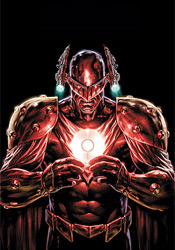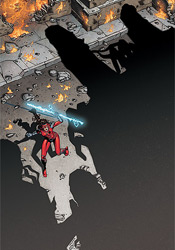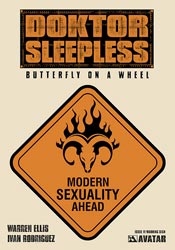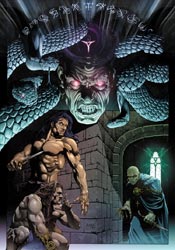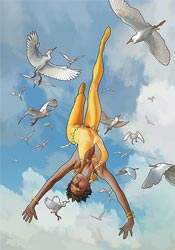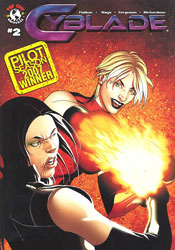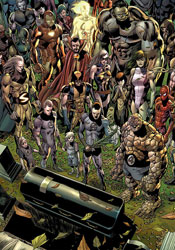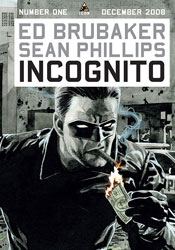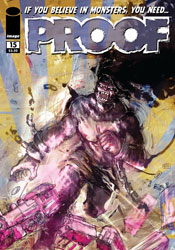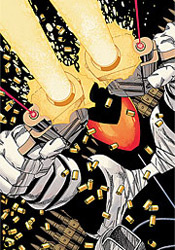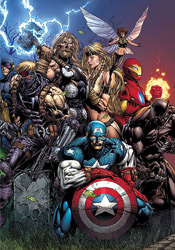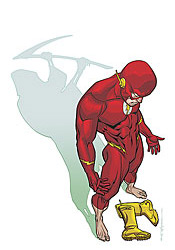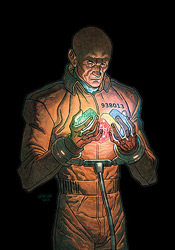
Geoff Johns fills this issue with a few strong observations, both about modern civilization and about Superman's place in it. Set against the backdrop of an invasion of flawed supermen is a narrative on the warlike nature of the human race, about how anything frightening or different is almost always met with anger and hostility. The Kryptonians have always been seen as a proud, almost arrogant race – they believe themselves to be noble at heart, but it's easy to see how they could come off as stuffy and elitist to a more working-class population. Neither side can see the wrong in their own actions, and while as observers we can note the benefits and drawbacks of both perspectives, we can also understand where each is coming from.
While Johns and his Superman collaborators James Robinson and Sterling Gates have delivered a complex, involved common plot to their respective books in "New Krypton," I was disappointed by the dialog in this issue. While it serves the purpose of pushing the storyline forward, it's missing a touch of warmth and personality. While I can understand the concept that native Kryptonians might speak with a different inflection than their human cousins, that's no excuse for filling an entire issue with emotionless, robotic drones. And these problems aren't even exclusive to the citizens of Kandor: Lois, Ma Kent and Superman himself all speak in a similarly monotonous voice. It's like Harrison Ford said when he first read the script for Star Wars; “you can write this shit, but you sure can't say it.” I have a hard time imagining anyone firing off lines like these on a whim.
An entire stable of artists have followed Johns into the fray, with contributions of varying lengths coming from Pete Woods, Renato Guedes and Wilson Magalhaes. Woods handles the vast majority of the issue, with a style that's sometimes a little awkward but generally solid. He keeps the page crisp, smooth and clean, although he's constantly forcing Supes into some very odd, uncomfortable poses. Woods enjoys his best moments this month in the two back-to-back splash pages around the middle of the issue – a set of large, panoramic landscapes that succeed without accompanying dialog.
As the seventh and concluding chapter of "New Krypton," it should go without saying that new readers probably won't want to jump onboard with this issue. While it does its best to keep the action understandable for fresh observers, too much of the story still depends on a knowledge of what's come before to make much sense of things. If you've been with “New Krypton” since the start, this issue does manage to wrap things up neatly without shutting the door on any future developments. It's inoffensive if not particularly stunning, occasionally bland with a few dashes of flavor, and all in all just about average. Flip through it if you're curious.
Overall Score: 5.5
